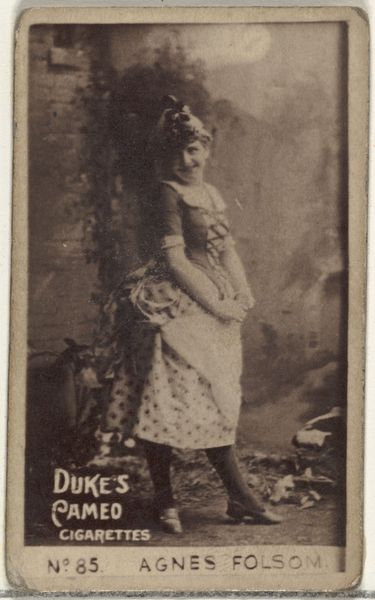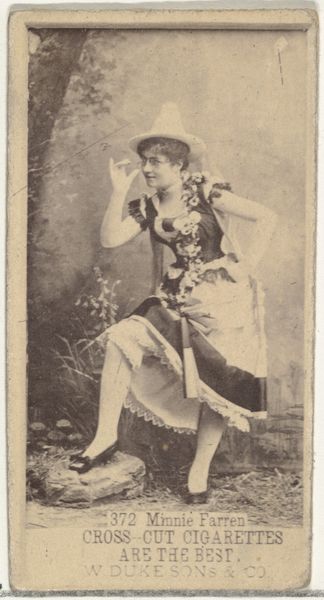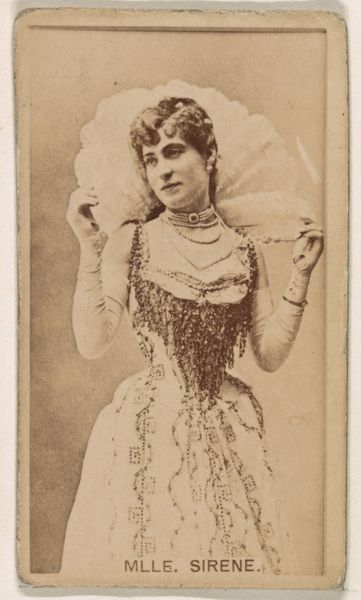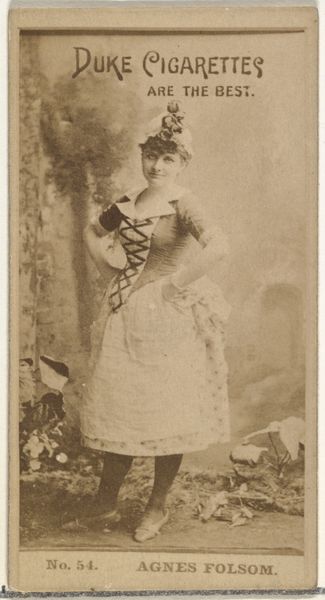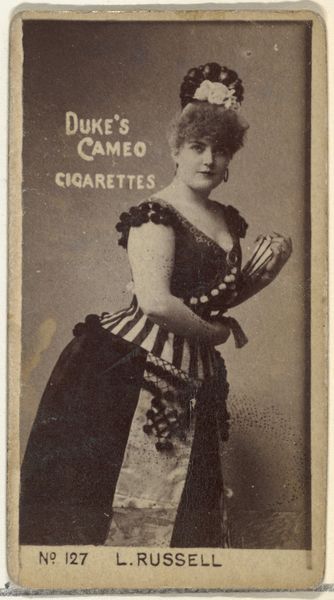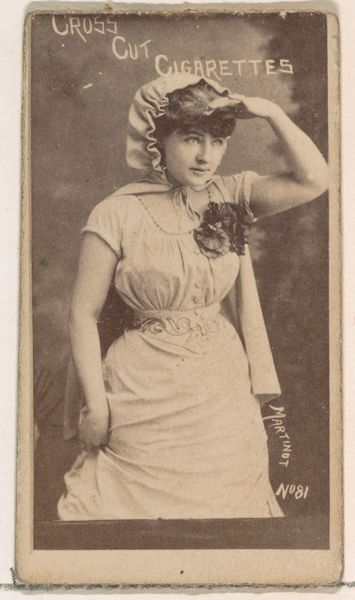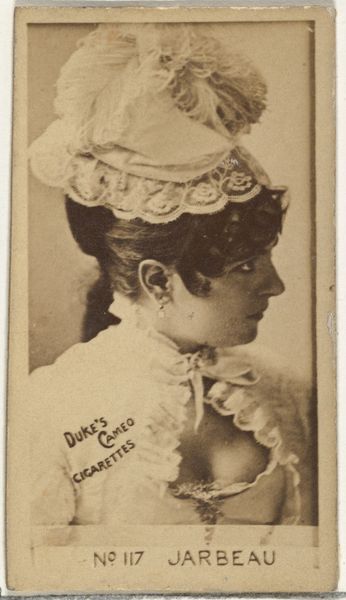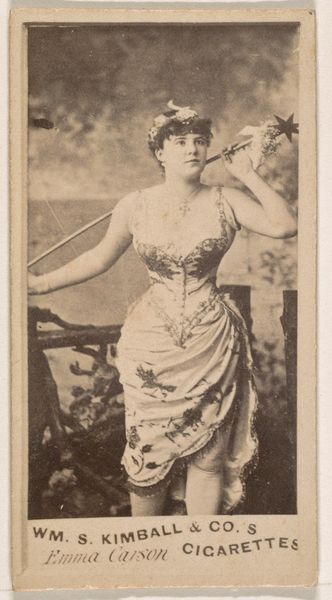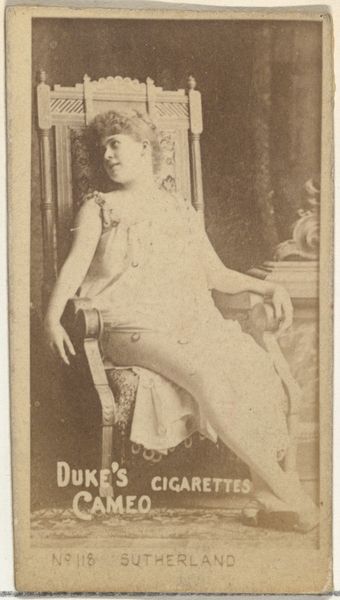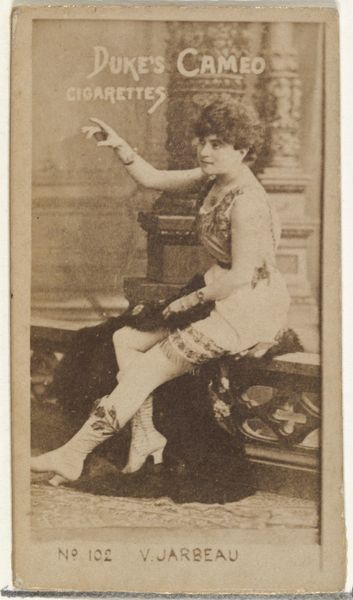
Card Number 113, Josephine Stone, from the Actors and Actresses series (N145-4) issued by Duke Sons & Co. to promote Cameo Cigarettes 1880s
0:00
0:00
drawing, print, photography
#
portrait
#
drawing
#
16_19th-century
# print
#
impressionism
#
photography
#
19th century
#
genre-painting
Dimensions: Sheet: 2 11/16 × 1 3/8 in. (6.8 × 3.5 cm)
Copyright: Public Domain
Editor: Here we have "Card Number 113, Josephine Stone" from the Actors and Actresses series, a cigarette card from the 1880s. The image itself, though small, feels quite theatrical. What’s your take on this peculiar photograph? Curator: I'm immediately drawn to the material conditions of its production. This isn’t simply a portrait; it's an advertisement, a commodity produced en masse by W. Duke, Sons & Co. How does the context of its distribution - nestled within a package of Cameo Cigarettes - shape our understanding of Josephine Stone’s representation? Is she selling talent, beauty, or simply the promise of sophisticated leisure tied to tobacco consumption? Editor: That’s an interesting way to see it. So, it’s less about the artistry and more about the commercial exchange? Curator: Precisely! Think about the labor involved. From the photographic process to the printing and distribution networks, each card embodies a system of production. How does viewing Stone's image as a product of this system change our perception of her as an individual and a performer? Does the accessibility afforded by mass production democratize representation, or does it further objectify its subject for capitalist gain? Editor: I hadn’t considered it in that light. So it is the beginning of image and fame commodification? Curator: You’ve got it! Also consider how the seemingly disposable nature of these cards – easily discarded after the cigarettes are gone – plays into broader Victorian notions of ephemerality and consumerism. The actress is transient in the public eye, similar to cigarettes quickly burnt and enjoyed. What is discarded and what remains are all part of its historical analysis. Editor: So, looking at the bigger picture and analyzing the process gives the photograph new layers of significance. It’s fascinating. Curator: Indeed. By examining the material history and its place within a specific economy, we unlock crucial insights into both the art and its context.
Comments
No comments
Be the first to comment and join the conversation on the ultimate creative platform.
